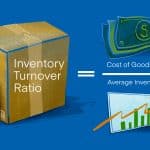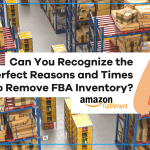
Key Points
- If your business fails to set buffer stock and inventory levels, you risk having an empty catalog and overselling to customers. Ensuring this doesn’t happen is crucial.
- ‘Buffer stock’ and ‘buffer inventory’ are not interchangeable. Buffer stock refers to ready-to-ship products while buffer inventory is excess raw materials and MRO that can be used to produce stock for orders.
- Some of the best ways to calculate optimal buffer stock and inventory levels include, the ‘traditional’ safety stock formula, the Heizer and Render formula, and Greasley’s method.
- Descartes Sellercloud provides a range of features to help you manage your inventory and set buffer inventory and stock levels, including setting a safety quantity and predictive purchasing.
How much stock does your ecommerce business need to satisfy current and future customer orders? How much inventory do you need to create and package your products for sale? For ecommerce sellers, it takes inventory to sell inventory. If you handle fulfillment in-house, this means having enough merchandise to fulfill your current and future orders before needing to re-up from your suppliers.
For sellers utilizing third-party logistics (3PL) services, this means ensuring that they have distributed enough inventory to all their partners so that orders can be fulfilled reliably on their behalf. For dropshippers, it means making sure your suppliers can meet the demand of your customer base.
Whatever your omnichannel business looks like, if you aren’t proactive about establishing and maintaining access to proper inventory levels, your catalog will fill with out-of-stock notices, and you risk overselling.
Customers who intend to purchase your products can’t get them. Customers who have already placed orders receive notices that their orders have been canceled. Establishing the ideal amounts of buffer stock and buffer inventory for your online retail business is critical to avoiding these profit-killing scenarios.
Having the right tools and workflows to manage these logistics can make it simple and painless.
The Difference Between Buffer Stock and Buffer Inventory
For most ecommerce businesses, two types of physical goods move in and out of their warehouses: stock and inventory. While often these terms are used interchangeably, there is a significant difference:
- Stock is any finished, retail product ready to be marketed and sold to a customer. They are typically assigned SKUs and listed for sale in your ecommerce catalogs.
- Inventory refers to the totality of the physical goods in your business’s possession. This includes stock (finished products), raw materials, and work-in-progress (WIP) products not yet fully in a state ready for sale. From an accounting perspective, inventory includes the tools and equipment used in Maintenance, Repair, and Operations (MRO).
For your omnichannel ecommerce business to run smoothly, you need to always have enough inventory of all types to keep production and fulfillment moving forward. This is where buffer stock and buffer inventory come in.
- Buffer stock—sometimes referred to as ‘safety stock’—is a quantity of ready-to-ship products that you maintain to protect against overselling.
- Buffer inventory is an excess of raw materials and MRO that allows you to continue producing stock for future orders. It also includes the number of WIP products you maintain to keep production moving forward and the aforementioned buffer stock quantities.
The optimal versions of these two amounts can look vastly different across brands and businesses. The nature of your products, production processes, supply chain, carrying costs, and storage arrangements will all contribute to determining your company’s ideal buffer stock and buffer inventory levels.
Furthermore, your ideal buffer levels may fluctuate over time depending on internal and external factors. Events like supply chain delays, holidays, and promotions may necessitate increases in buffer inventory levels. Slow seasons or declining sales trends may lead to lower needs.
Ultimately, whichever way you calculate buffer quantities, it should be flexible and agile enough to adapt to your ever-evolving circumstances as an ecommerce retailer.

Ways to Calculate Optimal Buffer Stock and Inventory Levels
Ideally, all amounts of buffer inventory you keep in your warehouse should be enough to give your business peace of mind without incurring unnecessary carrying costs. Orders can be fulfilled without delay. Production can continue without interruption.
How you settle on what these numbers should be is up to you, but there are several popular methods widely used across the retail industry:
Setting a Fixed Buffer Inventory
Rather than opting for any of the more complicated algorithms below, the simplest option for some businesses is to just select and set a comfortable inventory quantity threshold as their buffer. This can be a particularly effective plan for ecommerce businesses that can afford to carry large amounts of excess stock due to either the nature of their products or their warehousing arrangements.
It is a quick, albeit imprecise, approach. Despite being called ‘fixed,’ the buffer levels are not set in stone. These levels can be manually increased or decreased based on sales forecasts or other business considerations.
The ‘Traditional’ Safety Stock Formula
If you have access to basic sales, production, and supply figures, you can use this method to calculate the proper amount of buffer inventory to keep on hand for a given product or material.
(Maximum daily sales x Maximum lead time) – (Average daily sales x Average lead time)
One disadvantage of this method is that it may carry more inventory than necessary. It may also be insufficient to satisfy sharp spikes in customer demand.
More Complex Buffer Stock Formulas
For those looking for a more nuanced approach, there are several more complicated ways to generate more accurate figures. This is particularly useful for ecommerce businesses with high warehousing overhead, large products, particularly dynamic sales rates, inconsistent supply chains, and/or other types of logistical hurdles.
The Heizer and Render Formula
One popular buffer inventory formula is the Heizer and Render formula:
Z x 𝜎dLT
In this formula, Z is a variable known as the Z-score set according to your desired service factor. It represents how many standard deviations above the mean level of demand you want to ensure you will not oversell a given product or run out of a given piece of inventory. The higher the number, the lower the odds of running out, but the more buffer inventory you will inevitably carry.
𝜎dLT represents the standard deviation in lead time or the variation between your average supplier lead times and their actual fulfillment times. This formula protects you against out-of-stocks caused by suppliers who provide inconsistent fulfillment speeds and lead time requirements.
Greasley’s Method
Another useful formula for calculating optimal buffer inventory levels is known as Greasley’s method.
Z x 𝜎dLT x Davg
Like Heizer and Render, Greasley’s formula includes the Z-score confidence variable and the standard deviation in the lead time variable. However, the addition of the average demand variable (Davg) offers an extra layer that considers patterns of customer behavior as a predictor of your buffer inventory needs.
Ecommerce sellers that regularly face sales variances due to seasonality, promotions, or otherwise volatile markets would be better served to opt for buffer calculations that account for fluctuations in customer demand. No matter your chosen method, implementing and maintaining a buffer inventory is made simple with a proper, reliable inventory management system.
Want to learn more about inventory management? Check out our inventory management guide here.
An Effective Inventory Management Platform is Critical to Managing Buffer Stock and Buffer Inventory Levels
Keeping track of order inventory and production stock is already challenging. Managing incoming and outgoing orders, juggling multiple warehouse locations, and tracking complex logistics operations can all be complicated workflows in their own right.
Modern omnichannel ecommerce requires a unified inventory management platform to manage it all. Ideally, the platform you choose should also provide the tools to establish and maintain the buffer inventory and stock levels required to keep your business running smoothly and efficiently.
Descartes Sellercloud’s suite of tools is perfect for this challenge. Not only does our omnichannel growth platform give you all the tracking and organizational tools you need to process orders, track inventory, maintain an omnichannel catalog, and manage all of your warehouse operations, but our predictive purchasing tools can also help automate the maintenance of your stock and inventory levels.
Using one of the abovementioned methods, establish the buffer inventory levels you require. This may be for every product you sell or possibly just for your highest-performing inventory. From there, Descartes Sellercloud allows you to set a per-product ‘safety quantity‘ to establish a stock buffer against overselling.
This ‘safety quantity’ is subtracted from the actual quantity of a product you have on hand before adding it to your omnichannel listings. For instance, if you have 100 units on hand and a safety quantity buffer set to 10 units, Descartes Sellercloud will report to channels that you only have 90 units available for sale.
This buffer can be used in conjunction with predictive purchasing to ensure that there is always enough stock to meet customer demand.
For more on how Descartes Sellercloud can help keep your omnichannel ecommerce business growing while protecting you against pitfalls like overselling, contact us directly for a free demo.




